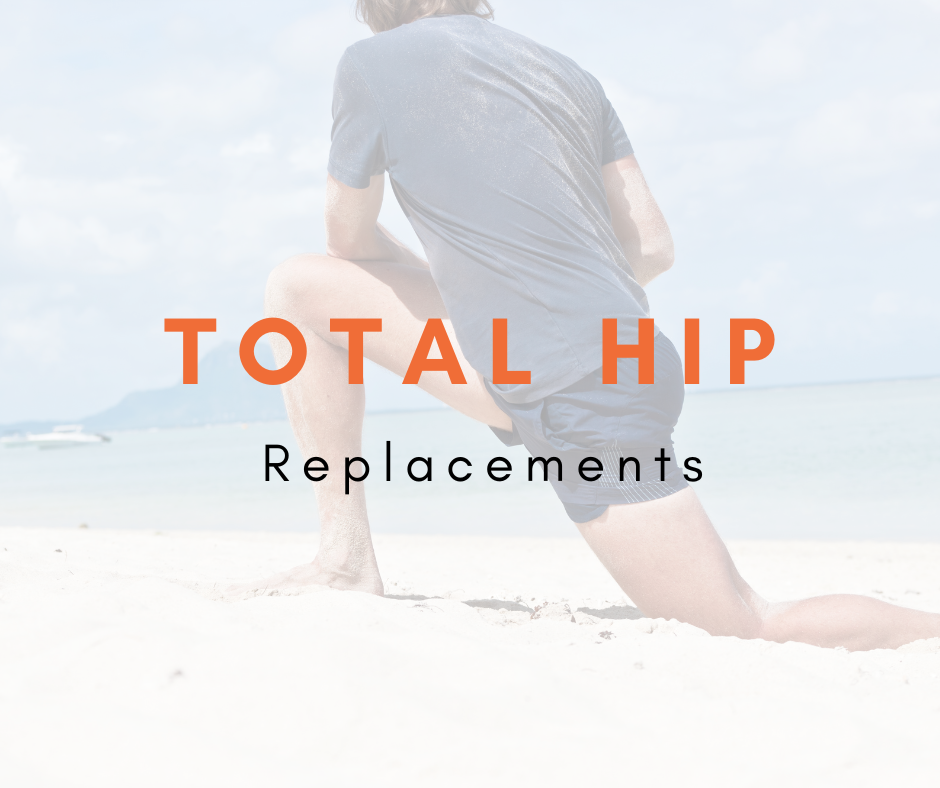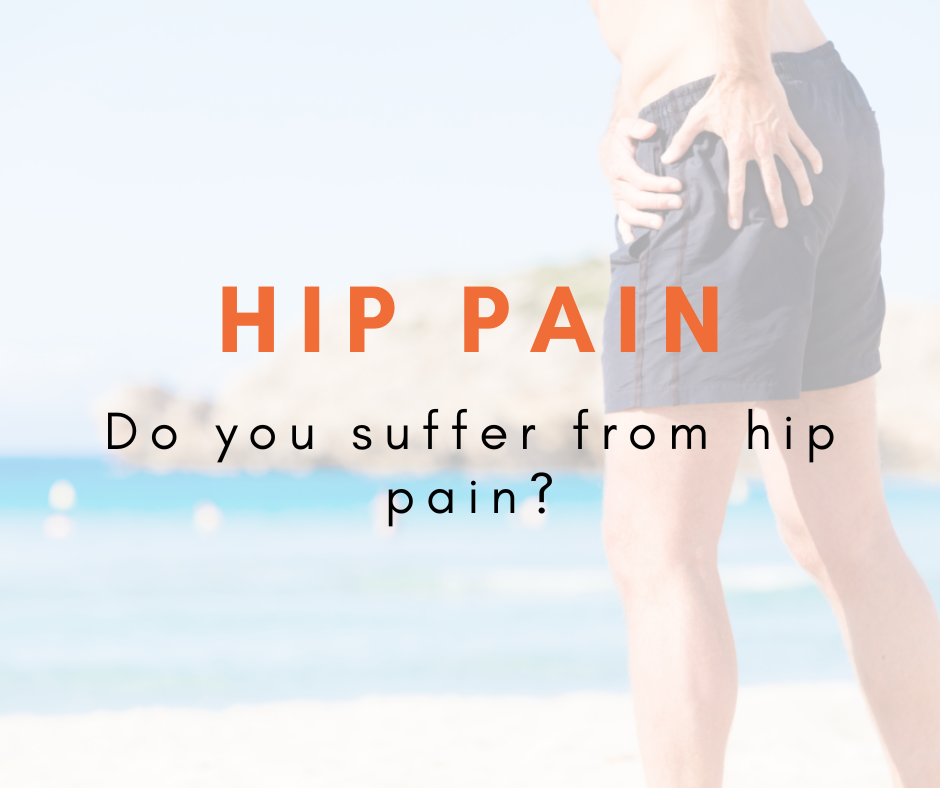
Total Hip Replacements
Having had my husband recently undergo a total hip replacement before the age of 50 it has been an interesting process to see that rehabilitation expectations and programmes have not changed much in the past 30 years. This is despite huge progress in the area of “exercise is medicine” in a theoretical and practical sense. There has been significant evolution in the surgical materials and procedures utilised which has enabled much younger patients such as my husband to undergo total hip replacements rather than “sitting around waiting for another 10 – 15 years with pain and reduced function and activity levels” until they are deemed an appropriate age for a joint replacement. It has been a hugely positive process understanding the progress in the surgical space that previously demonised the concept of total hip replacements below 50, largely due to the expected lifespan of the new hip joint and the complication rates during repeat replacements.
What has interested me throughout this experience is that although everything else has moved on physiotherapy rehabilitation expectations remain largely unchanged. There is no doubt that initial physiotherapy post total joint replacement is relatively standard and the most essential elements remain the primary priority. Learning to walk again, everyday functional activities such as dressing and mobilising, pain management and regaining basic mobility and strength is essential. BUT beyond this it seems as though little has changed.
Let’s take walking for example – most patients have walked and mobilised abnormally for a number of year prior to their hip replacements and therefore regaining a normal gait by focusing on this and allowing appropriate time for healing remains the standard rehabilitation. Beyond this basic goal patients in their 40’s and 50’s often have greater desires for a return to full function at a significantly higher level than those of the 70 or 80 year old who often simply wants to function in everyday life with reduced levels of pain and disability. Surely our pre and post-operative rehabilitation and corresponding education should address this space in this growing population?
The reality in the NZ environment is those who undergo a total joint replacement receive immediate post-operative physiotherapy care when in hospital, but that the time spent in hospital is ever decreasing due to ongoing demands on our health system. It seems hard to imagine that the person who receives basic physiotherapy intervention in the first 48 hours post total joint replacement and a home booklet of basic exercises for the ensuring weeks or months could compare to the individualised rehabilitation post op that would ideally occur in the 3 – 6 months post operatively particularly in this younger active subset of patients.
Going forward we hope to work together with our local surgeons to assess this in a research trial but in the meantime here are some things we do know.
- A recent research study showed no significant benefits of pre and post-operative individualised rehabilitation BUT the majority of these studies were of low quality with variable programming and study design so are very hard to compare and gain accurate information that can be used going forward. In addition many of these studies span back 30 years when the population undergoing hip replacements was very different from the more active population and younger ages we are discussing here.
- Technology has advanced prosthetic materials substantially and these have a significantly greater tolerance to physical loads. Patients can often return to high demand physical activities as a result. This in combination with advances in surgical techniques have allowed patients to consider a return to a more “normal” way of life for younger active individuals post total hip replacement and yet on paper our rehabilitation programmes have not advanced alongside this.
- In the older population we know due to the increased pressure on our health system currently wait times for surgery continue to increase. A nationwide survey of patients waiting for total hip replacement compared the quality of life in a group of patients in 2020 and compared these to a similar group in 2014 – 2017. The 2020 group had a significantly worse quality of life measure with over 1/3 of this group rating their quality of life as less than 0, defined as a health state “worse than death”. Over 80% of this group felt that their quality of life had deteriorated while waiting, and time spent on the waiting list was independently associated with a decrease in quality of life. It is likely that patients waiting for extended periods for surgery develop greater losses in physical capacity, range of motion and muscle health and function. The baseline capacity in this group is likely to be low, meaning there may be much more to gain from physiotherapy intervention, particularly exercise interventions and individualised advice in this population while they await surgical intervention.
Post operatively
So what are we hoping to achieve in the first few weeks after a hip replacement?
- Graduated restoration of function
- Re-establish efficient movement patterns
- Re-establish efficient muscle recruitment patterns
- Active range of movement through appropriate ranges for surgical approach
- Avoid excessive loads on the healing scar
What about strength training?
Patients will begin to naturally restore strength post operatively with reductions in pain and fear and an increase in functional activity. Rebuilding muscle bulk and strength are NOT our priority in the first few weeks after major joint replacement surgery. So the focus should be on the points above in the early stages post operatively rather than a focus on targeted strengthening.
But once we can start to strengthen - What type of exercises should we use?
We know from research that osteoarthritis has a variable effect on muscle wasting and resulting weakness throughout the hip. As a result we know that exercises targeting our gluteals – minimus, medius and maximus but not TFL (hip flexor muscle that sits on the side of your hip) are important. We know that exercises with our targeted leg not touching the floor (open chain exercises) such as standing and lifting one leg out to the side or behind us strongly target our TFL and that our gluts are really influenced by weightbearing stimulus. This is likely to be even more important for those with hip pain, who have lost strength in these muscles prior to surgery due to the inhibiting effect of pain. We would therefore be much better after the initial stages of healing to focus on exercises that incorporate weightbearing for example standing on one leg, hip hitching type exercises and variations such as bridging, squatting and sidestepping.
What is also important is that we consider the surgical approach when designing post-operative rehabilitation programmes. It takes around 3 - 4 months for a solid scar to form after capsular repairs and it is essential that aggravation or disruption of this is prevented to ensure that dislocation is avoided.
Pool based exercise is also commonly advised. Here gravitational stimulus is reduced, and there is therefore less stimulus for the gluteals to activate. If pool rehabilitation is part of your plan reduce exercises where you are moving one leg out to the side, in front or behind in the pool and instead swap these with sidestepping, step-ups and exercises that have contact with the pool floor throughout.
In summary what we do know is that total hip replacements provide great relief of pain and improvement in function and quality of life in the large majority of patients without complications. Whilst this is the case our population undergoing this surgery is changing and alongside this a progression of our pre and post-operative exercise therapy needs to progress also. For those undergoing total hip replacement that have the means available to undergo an individualised programme both pre and post operatively outcomes are likely to be maximised. For those unable to undergo individualised care progression and resources to ensure a graduated rehabilitation programe can be completed is an important element going forward.
If you have any questions about this please contact us as we would love to help you through your rehabilitation journey
reception@buretaphysio.co.nz or 5761860.
See some great examples below from Alison Grimaldi a specialist hip physiotherapist in Australia of exercises that are fantastic for recovery post total hip replacement (remember these are not to be completed in the early stages post operatively when the focus is on healing).
References
- Saueressig T, Owen PJ, Zebisch J, Herbst M, Belavy DL. Evaluation of Exercise Interventions and Outcomes After Hip Arthroplasty: A Systematic Review and Meta-analysis. JAMA Netw Open. 2021 Feb 1;4(2):e210254.
- Clement ND, Scott CEH, Murray JRD, Howie CR, Deehan DJ; IMPACT-Restart Collaboration. The number of patients "worse than death" while waiting for a hip or knee arthroplasty has nearly doubled during the COVID-19 pandemic. Bone Joint J. 2021 Apr;103-B(4):672-680.
- Chen X, Li X, Zhu Z, Wang H, Yu Z, Bai X. Effects of progressive resistance training for early postoperative fast-track total hip or knee arthroplasty: A systematic review and meta-analysis. Asian J Surg. 2021 Oct;44(10):1245-1253.
- Hug F, Hodges PW, Tucker K. Muscle force cannot be directly inferred from muscle activation: illustrated by the proposed imbalance of force between the vastus medialis and vastus lateralis in people with patellofemoral pain. J Orthop Sports Phys Ther. 2015 May;45(5):360-5.
- Zacharias, A., Green, R., Semciw, A., English, D., Kapakoulakis, T. and Pizzari, T., 2018. Atrophy of hip abductor muscles is related to clinical severity in a hip osteoarthritis population. Clinical Anatomy, 31(4), pp.507-513.
- Moore, D., Semciw, A. and Pizzari, T., 2020. A systematic review and meta-analysis of common therapeutic exercises that generate highest muscle activity in the gluteus medius and gluteus minimus segments. International Journal of Sports Physical Therapy, 15(6), pp.856-881.
- Ganderton C, Pizzari T, Cook J, Semciw A. Gluteus Minimus and Gluteus Medius Muscle Activity During Common Rehabilitation Exercises in Healthy Postmenopausal Women. J Orthop Sports Phys Ther. 2017 Dec;47(12):914-922.
- Tay K, Tang A, Fary C, Patten S, Steele R, de Steiger R. The effect of surgical approach on early complications of total hip arthroplasty. Arthroplasty. 2019 Sep 3;1(1):5.
- Macadam P, Feser EH. Examination of gluteus maximus electromyographic excitation associated with dynamic hip extension during body weight exercise: A systematic review. Int J Sports Phys Ther. 2019 Feb;14(1):14-31.


